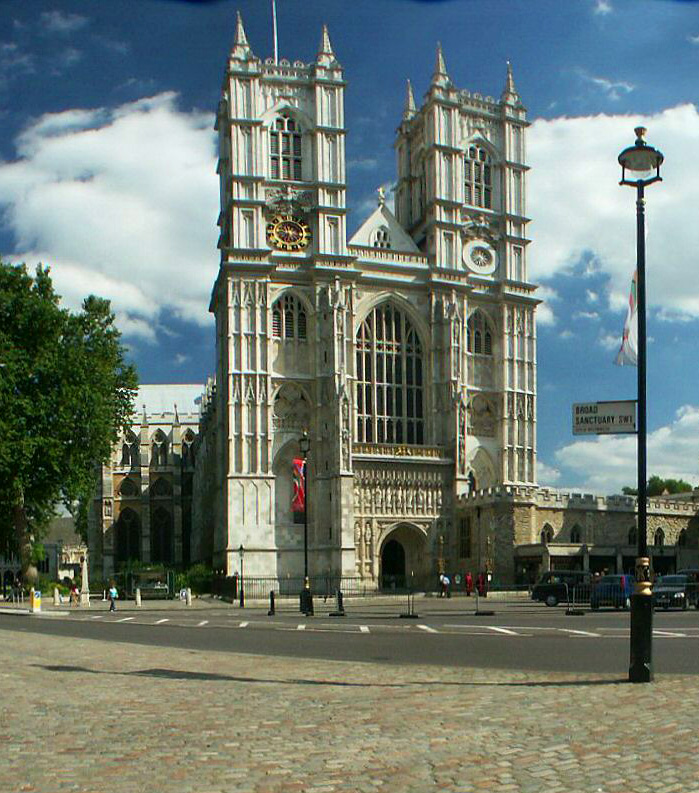
This photo of Westminster Abbey in London is part of one of the panoramic images found on the PanoramicEarth.com Tour of London. There are over 100 images taken from around
Plan your visit to
Westminster Abbey is another very popular attraction in
The whole area owes it’s name to the Abbey, as it was called the West Minster to distinguish it from
The history of Westminster Abbey may date back to 616 when a shrine is supposed to have been built on what was then known as
The next building phase was started by Henry III around 1245 and took some 300 years to complete, providing the highest Gothic Nave in England, and a much elaborated shrine to Edward the Confessor. Henry VIII assumed control of Westminster Abbey in 1539, granting it Cathedral status and sparing it from dissolution or destruction.
Thereafter the Abbey was caught in a religious game of ping pong, with the various monarchs changing the status of the building depending on whether they were Royalist Protestant, Catholic or non-Royalist Protestant. Thus made a Cathedral by Henry III, the Abbey’s control reverted to Benedictine Monks under Queen Mary (Catholic), only to be ejected again on the ascendancy of Queen Elizabeth I to the throne in 1559. It was threatened with destruction by Puritans wanting to destroy religious icons, but protected by the Sate under Oliver Cromwell, who was buried there in 1658 (only to be disinterred and hanged nearby and then beheaded in 1661 when the Royalists regained power).
Thankfully, Westminster Abbey survived all these upheavals and remains to play an important part in the British heritage. The Abbey has been the location of almost every coronation since 1065, with the new monarch being crowned seated on King Edward’s Chair, which dates from 1296. (The chair also contained the Stone of Scone, upon which Scotish Monarch had been seated until it’s capture by the English in 1297, and finally returned to
There is so much that could be written about the various tombs, statues and other artifacts within Westminster Abbey, but there is not sufficient space here.
The nearest tube stations to Westminster Abbey include
The full panoramic image taken of Westminster Abbey
1 comment:
beautiful church
Post a Comment